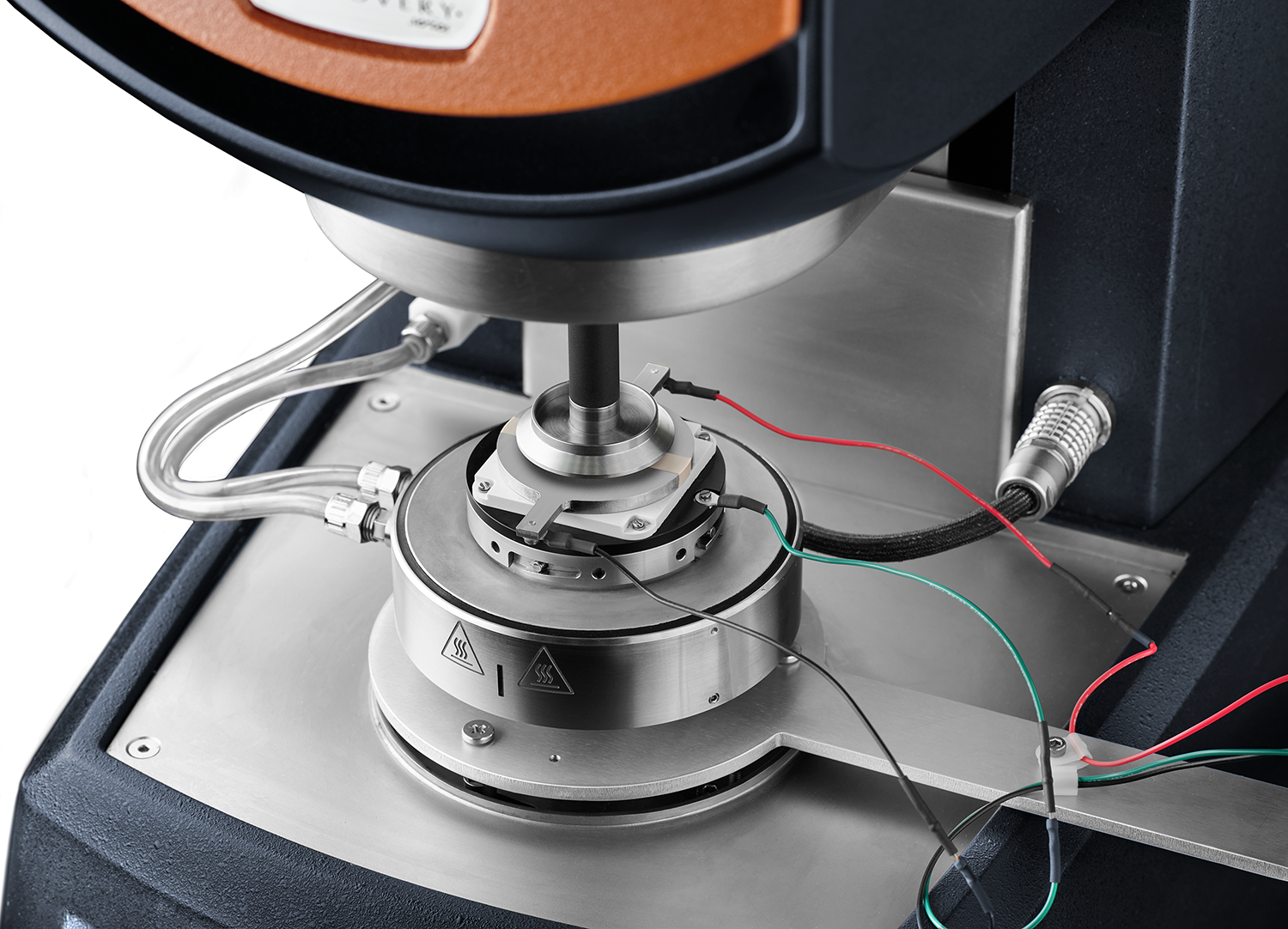Evaluating Battery Slurries with Simultaneous Rheological and Impedance Measurement
Morgan Ulrich | Hang Lau | Sarah Cotts
March 18, 2024
Lithium-ion batteries (LIB) are manufactured through a multistep process combining various active and inactive materials. Material selection and processing conditions can greatly affect the final battery performance. In particular, electrodes are one of the most important components that influence battery performance. Electrode quality directly contributes to the overall battery’s energy density and electrochemical performance.
Electrode manufacturing is highly complex, involving mixing active materials, binder, and conductive additives into a slurry coating on the metal collector. Then the electrode is dried and calendared (compacted). During electrode manufacturing, slurry formulations need to be stable during storage, dispersed easily, and flowable to produce a uniform coating. Characterizing slurries for optimal formulation and processing is a crucial step towards improving the entire battery’s performance.
Rheology, the study of the flow and deformation of materials under stress, plays a crucial role in the development and optimization of electrode slurries. As covered in a previous blog, battery electrode slurry rheology involves measuring viscosity, thixotropic behavior, and yield stress, three crucial properties to ensure proper coating and stability.

Another important element of electrode performance is electrical conductivity. Lithium-ion battery cathodes typically include conductive additives such as carbon black particles to compensate for the poor conductivity of the active materials. The carbon black particles agglomerate around the active particles to form a percolation network to conduct electrons to the current collector. The conductive network structure is highly important to the final electrode performance, but shear-induced changes during coating can disrupt the electrically conductive network.
Impedance spectroscopy provides insight on the conductive material dispersion in the slurry but does not account for shear-induced changes from the coating process. Simultaneous rheology and electrochemical impedance spectroscopy directly measure shear-induced changes in the microstructure, replicating slurry coating conditions and enabling measurements of time-dependent recovery after shear. This measurement confirms that the electrically conductive network is maintained in the finished electrode, predicting successful electrode performance prior to full battery assembly.
The new Discovery Hybrid Rheometer Rheo-Impedance Spectroscopy accessory achieves unmatched data quality in both dielectric impedance and rheology measurements. The novel design eliminates the need for electrical contact with the upper tool, which limits the measurement range, and instead positions both electrodes on a lower plate with the insulated upper parallel plate geometry as a conductor. The Rheo-Impedance accessory enables testing across the full range of the DHR’s torque sensitivity, enabling precise characterization of viscosity, yield stress, viscoelasticity, and structure recovery.
Learn more about unlocking complete rheological and impedance measurements of your slurry with the new DHR Rheo-Impedance accessory. For personalized solutions and battery testing guidance, contact TA Instruments experts.
Other Resources
- Application Note – Characterization of LIB Cathode Slurries Using Simultaneous Measurements of Rheology and Impedance Spectroscopy
- Application Note – Rheological Evaluation of Battery Slurries with Different Graphite Particle Size and Shape
- Application Note – Time Dependent Stability of Aqueous Based Anode Slurries with Bio-Derived Binder by Rheological Methods
- Application Note – Rheological and Thermogravimetric Characterization on Battery Electrode Slurry to Optimize Manufacturing Process
- eBook – https://www.tainstruments.com/essential-battery-slurry-characterization-techniques/







